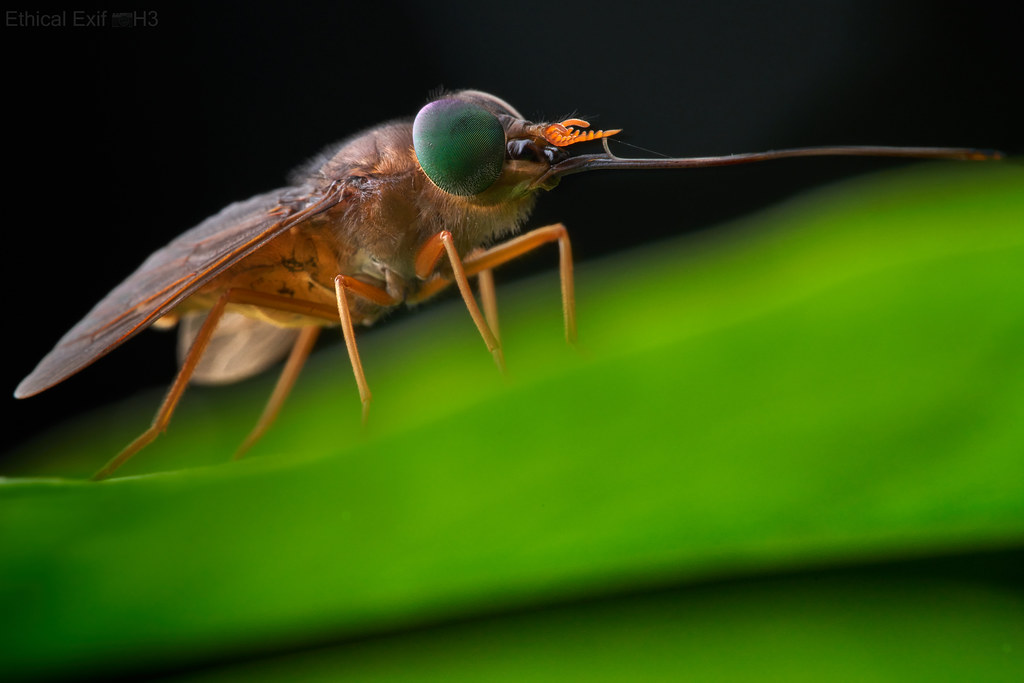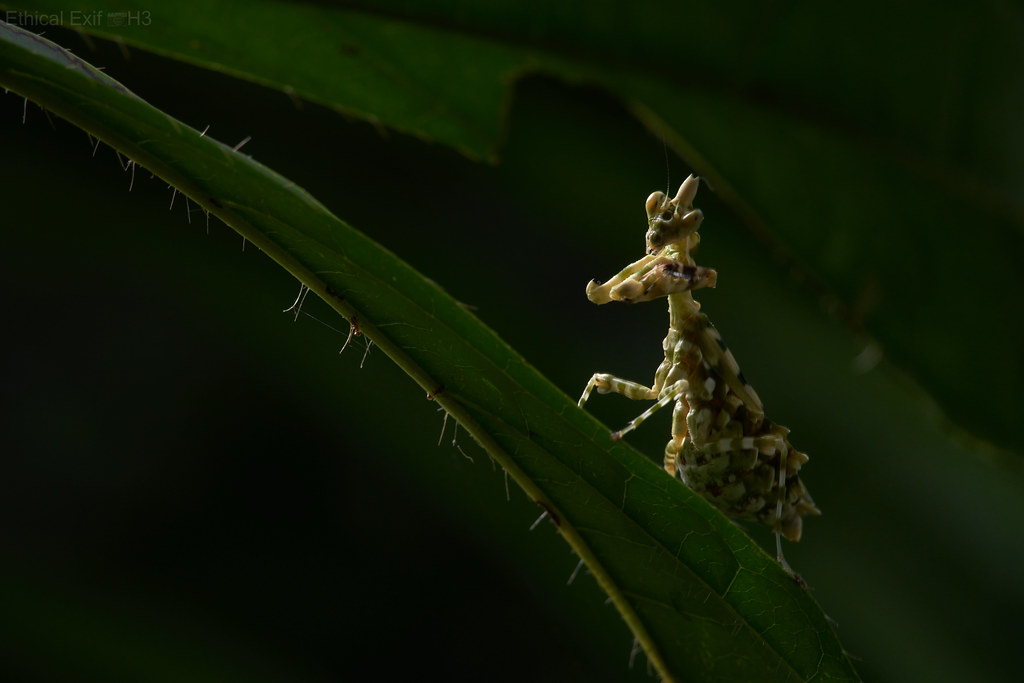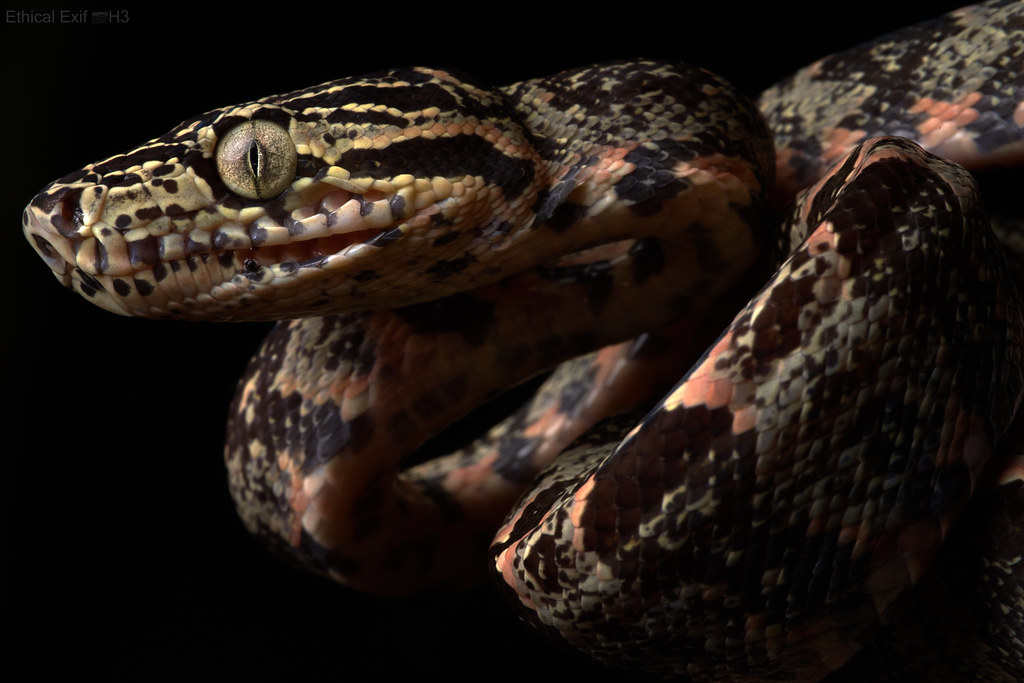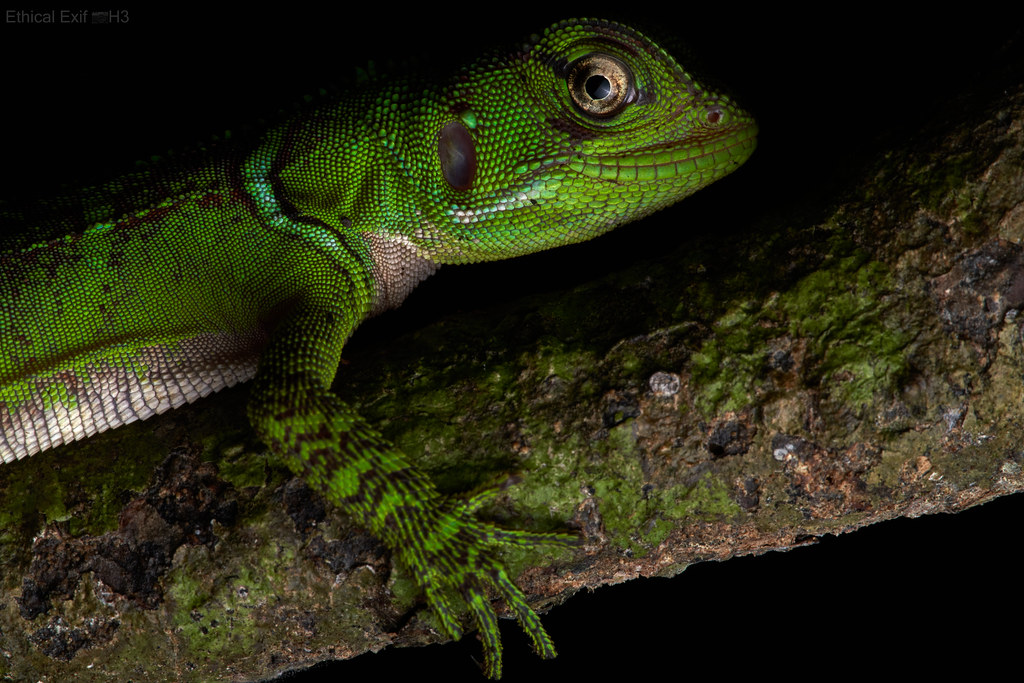
Net-casting spider (Deinopis sp.)
The spider waits until nightfall when her huge anterior median eyes provide an unrivalled night vision, their lenses with an f/0.58) mean they are able to concentrate light more efficiently than a cat (f/0.9) or an owl (f/1.1). She owes this sensitivity to the light activated molecule rhodopsin, tightly packed into a microvillar membrane (which dramatically increases the surface area). Amazingly, 1500 times as many photons reach the light receptors in her eyes than the rods in our own eyes. She even accomplished this without the presence of a tapetum, a reflective membrane used to concentrate available light in many other nocturnal animals. However her work is not done. The rhodopsin which enables her unparalleled night vision is so sensitive to light that daytime exposure would actually destroy it. Thus, at dawn, the spider spends the first 2 hours dismantling the light sensitive microvillar membrane and rhodopsin molecules. The latter subsequently migrate behind a protective pigment layer, effectively rendering them less sensitive to light. When dusk falls, the light sensitive membrane is once again renewed, web building is resumed and the hunt can begin anew.

Spider building cocoon:

En guarde - horsefly with long proboscis:

Flower mantis (Callibia Diana:

Rainbow boa (Corallus hortulanus):

Amazon broad-headed wood lizard (Enyalioides laticeps):

Thanks for looking and commenting,
Paul
